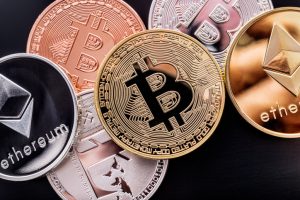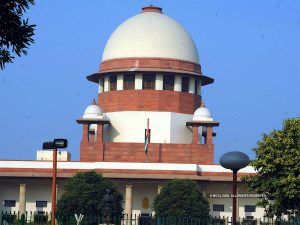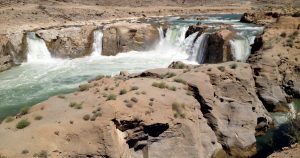Today Current Affairs: 7th May 2021 for UPSC IAS exams, State PSC exams, SSC CGL, State SSC, RRB, Railways, Banking Exam & IBPS, etc
Table of Contents
WAG 12 B Locomotive: Indian Railways:

Indian Railways inducts 100th 12000 HP WAG 12 B Locomotive
- The loco is named WAG 12 B with the number 60100.
- The locomotive is manufactured by Madhepura Electric Locomotive Pvt. Ltd. (MELPL).
- These locomotives are state-of-the-art IGBT-based, 3 phase drive, and 12000 horsepower electric locomotive.
- These high horsepower locomotives will help to decongest the saturated tracks by improving the average speed and loading capacity of freight trains.
- These locomotive are proving to be a game-changer for further movement of coal trains for the Dedicated Freight Corridor.
- First, 12000 HP Made in India Locomotive, manufactured by Madhepura Electric Loco Factory situated in Bihar, was put into operation by Indian Railways from Pt Deen Dayal Upadhyaya Jn Station on 18.05.2020.
Electric Locomotive Factory, Madhepura:
- The Electric Locomotive Factory, Madhepura is a joint venture of Alstom SA of France with Indian Railways for the production of 800 high-power locomotives over a period of 11 years designed to run on Indian tracks at 120 km per hour.
- Madhepura district is one of the districts of Bihar and Madhepura town is the administrative headquarters of this district.
Report On Social Stock Exchanges:

A technical group on Social Stock Exchanges (SSEs), constituted by the Securities and Exchange Board of India (SEBI), has submitted its report.
- SEBI set up the technical group in September 2020 under the chairmanship of Harsh Bhanwala, former chairman of NABARD.
- Earlier, a Working Group (WG) on the SSE, chaired by Ishaat Hussain, submitted its report in June 2020.
About Social Stock Exchanges (SSEs):
- The idea of the Social Stock Exchange (SSE) as a platform for listing social enterprise, voluntary and welfare organisations so that they can raise capital was mooted in the Union Budget 2019-20.
- Social enterprise can be defined as a non-loss; non-dividend paying company created and designed to address a social problem.
- It was proposed to be set up under the market regulator SEBI.
- The aim of the initiative is to help social and voluntary organisations which work for social causes to raise capital as equity or debt or a unit of mutual fund.
- SSE already exists in countries such as Singapore, UK, Canada among others. These countries allow firms operating in sectors such as health, environment and transportation to raise capital.
Recommendations of the Group:
- Type of the Organisation: Political and religious organisations, trade organisations as well as corporate foundations should not be allowed to raise funds through SSEs.
- Eligibility: For Profit Enterprise (FPE) and Not for Profit Organisation (NPO) will be eligible to tap the SSE if they are able to show their primary goals are social intent and impact.
- Entities listed on SSE will have to disclose their social impact report on an annual basis covering aspects such as “strategic intent and planning, approach, impact score card”.
- NPOs are usually structured as non-governmental organizations, Section 8 companies, trusts or societies. FPEs can be private limited companies, partnerships or sole proprietorships.
Facebook’s Oversight Board:

Facebook’s Oversight Board has upheld the social media network’s decision on January 7 to block the then-U.S. President Donald Trump from its platform.
- The Oversight Board has been set up as an independent body that will help Facebook figure out what content can be allowed on the platform and what ought to be removed.
- Facebook as well as its users can refer cases to the board.
- The decisions of the board are binding on Facebook.
- It was announced in 2018 and it officially began its work on October 22, 2020.
- In order to ensure the board’s independence, Facebook established an irrevocable trust with $130 million in initial funding, expected to cover operational costs for over half a decade.
- Anyone can nominate a candidate for board membership, through a recommendations portal operated by the U.S. law firm Baker McKenzie.
Why in News?
Cryptocurrency Transactions:

National Payments Corporation of India (NPCI) has refused to ban cryptocurrency transactions.
- Further, it has put the onus on banks whether to ban transactions of cryptocurrency trades or not.
- It told banks to make a decision based on the advice of their legal and compliance departments.
- The National Payments Corporation of India (NPCI) serves as an umbrella body for the operation of retail payment in India.
- This organization was established by the Reserve Bank of India along with the Indian Bank’s Association under the provisions of the Payment and Settlement Systems Act, 2007.
- Presently, NPCI is promoted by ten major promoter banks.
- NPCI can operate the following payment systems:
- National Financial Switch (NFS).
- Immediate Payment System (IMPS).
- Affiliation of RuPay Cards (debit cards/ prepaid cards) issued by banks and co-branded credit cards issued by non-banking financial companies (NBFCs) or any other entity approved by the RBI.
- National Automatic Clearing House (ACH).
- Aadhaar Enabled Payments System (AEPS).
- Operation of Cheque Truncation System.
- Products of NPCI:
- RuPay.
- National Common Mobility Card.
- Bharat Interface for Money (BHIM).
- Unified Payments Interface (UPI).
- Bharat Bill Payment System.
NPCI’s decision is based on the Supreme Court’s March 2020 ruling which set aside a directive by the Reserve Bank of India from April 2018 to ban banks and finance companies for “dealing in virtual currencies or providing services to facilitate” anyone trading in crypto.
- NCPI has not blocked the trades given that the RBI did not come out with any directive following the Supreme Court ruling.
About Cryptocurrency:
- Cryptocurrencies are digital currencies in which encryption techniques are used to regulate the generation of units of currency and verify the transfer of funds, operating independently of a central bank.
- It works on blockchain technology.
- Examples: Bitcoin, Ethereum, etc.
The Supreme Court Has Declined A Plea Made By The Election Commission Of India To Restrain The Media:

The Supreme court has declined a plea made by the Election Commission of India to restrain the media from reporting oral remarks made by a Division Bench of the Madras High court.
- The HC judges had said that poll body officials should be charged with “murder” for allowing rallies and mass gatherings during the Tamil Nadu Assembly elections.
- The judges had remarked that the EC was solely responsible for the COVID surge.
Observations made by the Supreme Court:
- Real-time reportage of court proceedings, including the oral exchanges in courtrooms between judges and lawyers, is part of the right to freedom of speech.
- With the advent of technology, we are seeing reporting proliferate through social media forums which provide real-time updates to a much wider audience.
- This is an extension of the freedom of speech and expression that the media possesses.
- This constitutes a virtual extension of the open court.
- Such live reporting of court proceedings is a cause of celebration rather than apprehension.
- Except in cases of child sexual abuse and marital issues, the phenomenon of free press should extend to court proceedings.
- The court said oral observations made during the course of a hearing do not bind the parties and do not form a part of the judgment.
- An exchange of views was intrinsic to the applicability of mind and the process of judging. .
- On the nature of the remarks made by the Madras HC, the apex court said “a degree of caution and circumspection would have allayed the problems in the present case.
New Data About Venus:

Scientists have obtained new data about Venus by bouncing radio waves off Venus.
- The researchers transmitted radio waves toward Venus 21 times from 2006 to 2020 from NASA’s Goldstone Antenna in the Mojave Desert of California and studied the radio-echo, which provided information on certain planetary traits.
Latest findings:
- The study measured the tilt of the Venusian axis and the size of the planet’s core.
- A single Venusian rotation takes 243.0226 Earth days.
- That means a day lasts longer than a year on Venus, which makes a complete orbit around the sun in 225 Earth days.
- The Venusian planetary core has a diameter of about 4,360 miles (7,000 km), comparable to Earth’s core.
- The study calculated the Venusian tilt at about 2.64 degrees. Earth’s is about 23.5 degrees.
Eco Sensitive Zone (ESZ) Around The Thane Creek Flamingo Sanctuary (TCFS, Maharashtra):

The Ministry of Environment, Forest and Climate Change (MoEFCC) has notified an Eco Sensitive Zone (ESZ) around the Thane Creek Flamingo Sanctuary (TCFS, Maharashtra).
- The ESZ is meant to act as a buffer for protected areas and reduces developmental pressures around a wildlife sanctuary or national park.
About Thane Creek Flamingo Sanctuary:
- It is the second marine sanctuary of Maharashtra after Malvan sanctuary, and lies along the western bank of the Thane Creek.
- It is recognized as an “Important Bird Area” by the Bombay Natural History Society.
- TCFS is home to 39 categories of mangrove species, 167 species of birds like flamingos, 45 fish species, 59 species of butterflies, 67 insect species and mammals like jackals among others
Eco Sensitive Zone:
- Eco-Sensitive Zones (ESZs) or Ecologically Fragile Areas are areas within 10 kms around Protected Areas, National Parks and Wildlife Sanctuaries.
- In case of places with sensitive corridors, connectivity and ecologically important patches, crucial for landscape linkage, even areas beyond 10 km width can be included in the eco-sensitive zone.
- ESZs are notified by the Ministry of Environment, Forest and Climate Change (MoEFCC), under Environment Protection Act, 1986.
- Aim: To regulate certain activities around National Parks and Wildlife Sanctuaries so as to minimise the negative impacts of such activities on the fragile ecosystem encompassing the protected areas.
- Regulation of Activities in ESZs:
- Prohibited Activities: Commercial mining, saw mills, industries causing pollution (air, water, soil, noise etc), establishment of major hydroelectric projects (HEP), commercial use of wood, Tourism activities like hot-air balloons over the National Park, discharge of effluents or any solid waste or production of hazardous substances.
- Regulated Activities: Felling of trees, establishment of hotels and resorts, commercial use of natural water, erection of electrical cables, drastic change of agriculture system, e.g. adoption of heavy technology, pesticides etc, widening of roads.
- Permitted Activities: Ongoing agricultural or horticultural practices, rainwater harvesting, organic farming, use of renewable energy sources, adoption of green technology for all activities.
5G Trial:

The Department of Telecommunications (DoT) has given permissions to Telecom Service Providers (TSPs) for conducting trials for use and applications of 5G technology.
- This formally leaves out Chinese companies like Huawei and ZTE from the 5G race in India.
About the Trials:
- In the initial phase, these trials will be for 6 months, including a 2 month period for procurement and setting up of the equipment.
- TSPs will be required to test their set up in urban areas, semi-urban areas as well as rural areas.
- TSPs will be provided with experimental spectrum in various bands, such as the mid-band of 3.2 GHz to 3.67 GHz, the millimeter-wave band of 24.25 GHz to 28.5 GHz, and others.
- Applications such as telemedicine, tele-education, augmented/ virtual reality, drone-based agricultural monitoring, etc. will be tested.
- The data generated during the trials will be stored in India.
- Use of Indigenous Technology: The TSPs are encouraged to conduct trials using 5Gi technology in addition to the already known 5G Technology.
- The 5Gi technology was advocated by India and it is approved by International Telecommunications Union (ITU) – the United Nations specialized agency for information and communication technologies – ICTs.
- The 5Gi technology has been developed by IIT Madras, Centre of Excellence in Wireless Technology (CEWiT) and IIT Hyderabad.
- It facilitates much larger reach of the 5G towers and Radio networks.
Need for 5G Trial:
- The telecom market in India is left with only three private telcos, with the rest having surrendered to the low returns on investments over the years.
- The two state-run companies, MTNL and Bharat Sanchar Nigam Limited (BSNL) have survived but are making losses.
- In order to increase their average revenue per user, it is pertinent for telcos to start offering the new 5G technology as soon as possible.
5G Technology:
Features of 5G Technology:
- Bands in 5G: 5G mainly work in 3 bands, namely low, mid and high frequency spectrum — all of which have their own uses as well as limitations.
- Low band spectrum: It has shown great promise in terms of coverage and speed of internet and data exchange however the maximum speed is limited to 100 Mbps (Megabits per second).
- Mid-band spectrum: It offers higher speeds compared to the low band, but has limitations in terms of coverage area and penetration of signals.
- High-band spectrum: It has the highest speed of all the three bands, but has extremely limited coverage and signal penetration strength.
- Upgraded LTE: 5G is the latest upgrade in the long-term evolution (LTE) mobile broadband networks.
Internet Speed and Efficiency: In the high-band spectrum of 5G, internet speeds have been tested to be as high as 20 Gbps (gigabits per second) as compared to the maximum internet data speed in 4G recorded at 1 Gbps. - 5G will provide up to three times greater spectrum efficiency and ultra-low latency.
- Latency is the amount of time data takes to travel between its source and destination.
Bond Yield:

The Reserve Bank of India’s (RBI) decision to step up the purchase of Government Securities (G-Sec) under the Government Securities Acquisition Programme (G-SAP) led to the yield on the benchmark 10-year bond falling below 6%.
- In India, the yield of 10-year G-Sec is considered the benchmark and shows the overall interest rate scenario.
Bond Yield:
- Bond yield is the return an investor realizes on a bond. The mathematical formula for calculating yield is the annual coupon rate divided by the current market price of the bond
- Bond: Is an instrument to borrow money. A bond could be issued by a country’s government or by a company to raise funds.
- Coupon Rate: It is the rate of interest paid by bond issuers on the bond’s face value.
Effect of General Movement of Bond Yields:
- Movements in yields depend on trends in interest rates, it can result in capital gains or losses for investors.
- A rise in bond yields in the market will bring the price of the bond down.
- A drop in bond yield would benefit the investor as the price of the bond will rise, generating capital gains.
Reason for Decreasing Bond Yields:
- Due to economic uncertainty caused by Covid-19.
- In April 2021, the RBI launched G-SAP which has caused a decrease in G-sec yields which has continued since then
Dahla Dam:

The Taliban has captured Afghanistan’s second-biggest dam after months of fierce fighting in its former bastion of Kandahar.
- Dahla Dam, which provides irrigation to farmers via a network of canals as well as drinking water for the provincial capital, is now under Taliban control.
- The dam’s capture comes after clashes erupted in neighboring Helmand province this week, just days after the U.S. military formally began withdrawing its remaining troops from Afghanistan.
- The Dahla Dam, also known as Arghandab Dam, is located in the Shah Wali Kot district of Kandahar Province in Afghanistan.
- Constructed in 1952, it is said to be the second-largest dam in Afghanistan.
- The Dahla Dam is built on the Arghandab River.




